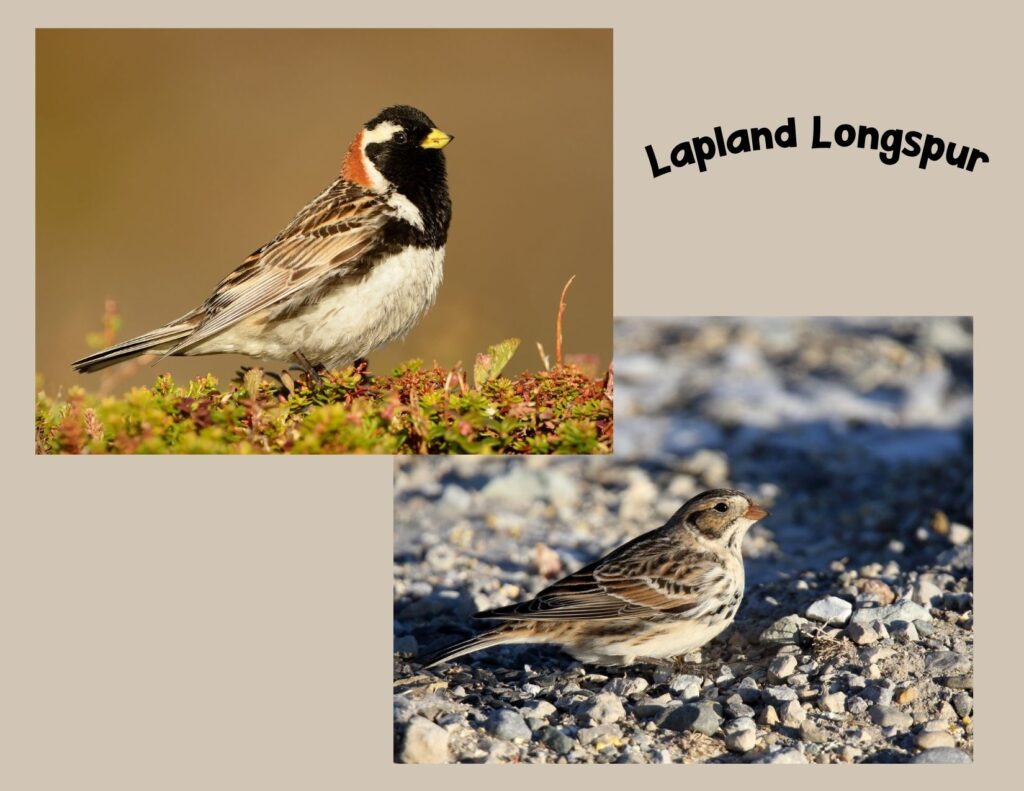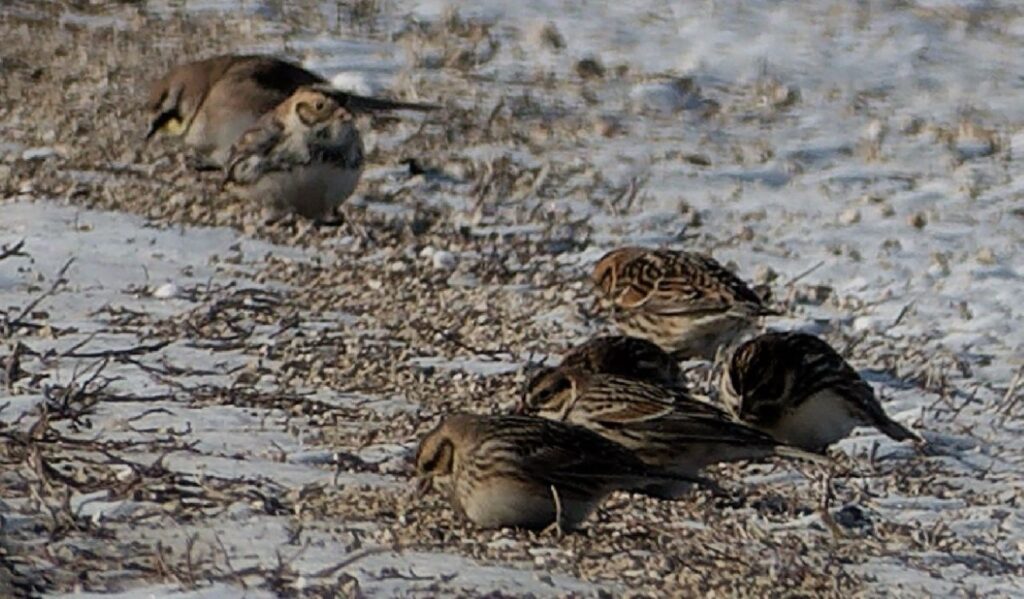Birdwatching can be especially fun when you spot a new species for the first time. That doesn’t often happen in winter around here because so many of our spring migrating visitors fly south for the non-breeding season (sometimes to other continents!).
It took my friend and I an embarrassingly long time (decades!) to realize that we could drive just a few miles out of the city to spot Horned Larks and Snow Buntings each winter. Until a couple of years ago, neither of us had ever seen those species before. Now we try to drive on some rural roads at least once or twice each January or February to see if we can find these cold-weather visitors.
Last weekend we added another species to our life lists—Lapland Longspurs. And as it turns out we have probably seen those birds before but never knew it!
The Lapland Longspurs I’ve seen in the bird books always look like the one in the upper left (below) with a black crown and face and a rusty-colored nape. Aren’t they handsome? But what I didn’t know until I had returned home from our little birding trip is that those colorful feathers are their breeding plumage. And they are nowhere near southern Wisconsin when they look like that. They breed in the High Arctic north of Canada!
The birds that visit Wisconsin in winter look like the one in the lower right—very sparrow-like and hard to distinguish when they are on the side of a road in the gravel with a flock of other birds.
Two weekends ago the temperature was well below zero when someone on a bird alert network posted that they had just seen a nice flock of Horned Larks, Snow Buntings and Lapland Longspurs along a county road we are familiar with. It was not the most appealing idea to go out in that cold, but our desire to add a new species to our birding life lists was too tempting to pass up.
We found the Horned Larks first. That was the easy part:
But deciphering this mess (see below) was a whole other issue. This just looks like a bunch of sparrows, doesn’t it? Look how well they blend in with the gravel and snow drifts:
It was too cold to spend any time outside of the car, and my friend’s vehicle has a windshield that’s slightly distorted at the edges and makes clear photography and clear views through binoculars next to impossible. Thankfully we’ve learned that the best plan for identifying difficult or new-to-us birds is to take lots and lots of photographs (even if they are bad!) and then analyze them later on a big computer screen.
Once we got back to our homes and started sorting through our photos, we could see that there were indeed Snow Buntings in that flock. Their non-breeding plumage is also more sparrow-like, but when they take flight they still have plenty of white feathers that stand out:
But what about all those little brown birds in the foreground? Turns out those were the Lapland Longspurs! It was hard to get any close-up photos because when we would try to “sneak up” on them in our vehicle, the tires would crunch the frozen snow causing the entire flock to take flight. Often they’d gather again behind us. We eventually figured out that if we just stayed in one spot and waited for a passing car to disturb the flock, they would sometimes land 20 feet or so in front of our vehicle for better viewing.
Comparing this professional photo of a non-breeding Lapland Longspur to our fuzzy photographs proved that indeed we did see a whole flock of these birds and could confidently add this species to our life lists!
Here are some fun facts about Lapland Longspurs from the Cornell Lab of Ornithology:
- Lapland Longspurs breed in tundra habitats across the arctic. Their name refers to the Lapland region of Scandinavia, which is partly in Sweden and partly in Finland.
- During summer, they eat an estimated 3,000 to 10,000 seeds and insects per day, plus feed their nestlings an additional 3,000 insects per day.







